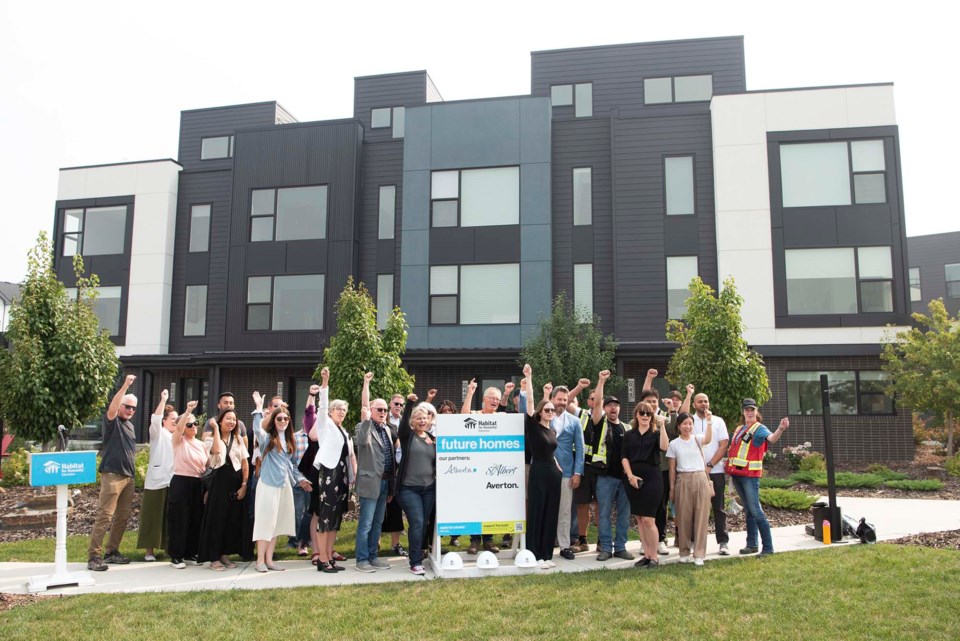The number of people who call the Botanical Arts City home increased by 9.2 per cent since 2018.
The city released preliminary census figures Tuesday showing the population of St. Albert jumped to 72,316 in 2024, an increase of 6,234 people.
That’s like adding an entire Bonnyville or Devon, or half an Edson to the existing population.
By comparison, St. Albert grew by 8.34 per cent between 2012 and 2018, according to data in the city’s in-depth analysis of the 2018 census.
The figure is subject to confirmation by the Alberta government, and is no cause for concern for Mayor Cathy Heron.
That could be because in the same time frame, the number of dwellings, including all occupied, vacant and even those still under construction, increased by 3,466 to 29,549.
Is 9.2 per cent in six years too fast?
“No, I think we're well able to manage what we've got,” Heron said Wednesday. “I think the 72,000 is a sign that we've actually obviously grown and maybe increased the growth rate after many years of kind of just slow and steady. It's a little bit faster now.”
The members of council have an informal bet on what the new population would be. Heron said she guessed somewhere in the 72,000 range (she guessed 73,000, according to a June 29 Gazette story).
At the time, Councillors Shelley Biermanski, Ken MacKay, and Mike Killick each bet the 2024 census would land between 71,200 and 72,000.
“I would like it to be higher,” Coun. MacKay said. “I would like it to be 73,000-74,000 because it obviously leads to more grant dollars.”
Coun. Killick, who prognosticated a precise 71,285, said he was hoping to see a “manageable” level of growth.
“A faster pace of growth means more challenges for providing infrastructure and schools, hospitals, roads, sewers, grass cutting — all of those things — and I just want to see a nice steady growth in the numbers and I believe we will see that."
Heron said this week the seeds planted by a land annexation in 2007 are coming to bear. This is how Jensen Lakes came to be.
“It honestly just takes that long,” she said, “for lands to be acquired by developers and then Area Structure Plans made and then servicing put in and then the homes get built. So, finally we're seeing the fruits of all that labour.”
She said St. Albert should continue to “push hard and tackle housing,” adding to the diversity of the city’s housing stock.
“The 3,466 new dwellings since 2018, a lot of that is multi-family and rental units, which is really important for the city. If we were just only ever offering big estate homes, we wouldn't grow as fast.
"As we are able to offer more diversity of housing, then that reputation, combined with opportunity and choice just brings the numbers in and allows us to grow.”
Dr. Sandeep Agrawal is associate dean, GPS Faculty of Graduate and Postdoctoral Studies at the University of Alberta, and was the inaugural director of the School of Urban and Regional Planning between 2013 and 2023.
He’s heartened to see the increase in the number of dwellings in St. Albert.
“St. Albert could certainly dodge the housing crisis that the rest of the country is facing,” he said Tuesday. “I mean, if you look at the size of the household from the previous census, it's about 2.53 (people per). And by looking at the numbers in terms of those who have moved to St. Albert and the increase in dwelling units, there's plenty for people to occupy or to rent in the city. So I think it's all in all good news.”
The growth in St. Albert is in-step with the rest of the Capital Region, according to Karen Wichuk, CEO of the Edmonton Metropolitan Regional Board (EMRB).
“Across the Edmonton Metro Region, municipalities continue to see transformative growth – we know that our Region is on track to welcoming another million people and adding more than 500,000 jobs in the next 20 years," Wichuk said in an email. “Recognizing that this growth can’t be left to chance alone, the EMRB’s member municipalities are working together to implement a forward‑thinking regional growth plan ... which provides a compelling vision and an integrated policy framework that is structured to enable the Region to grow smartly and responsibly.”
The EMRB issued a report in August 2023 that projected the region's population to grow to between 1.91 million and 2.44 million by 2044 and between 2.01 million and 2.63 million by 2050. The same document see as many as 1.26 million jobs in the region by 2044, and as many as 1.36 million jobs in 2050.
The St. Albert census was conducted between May 27 and June 27 of this year. Members of the city administration are poring over the numbers now in order to deliver a report to council in the fall. It will be posted online.



